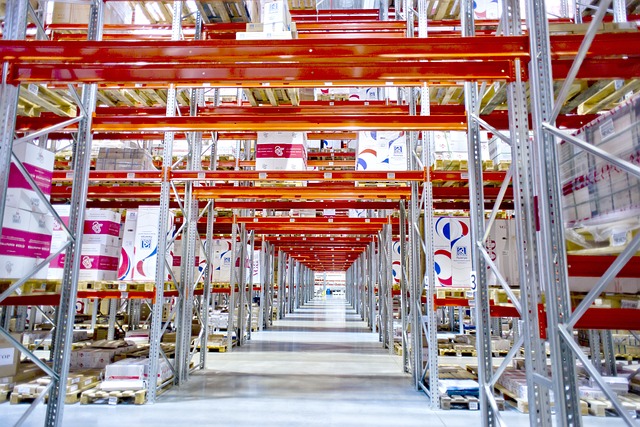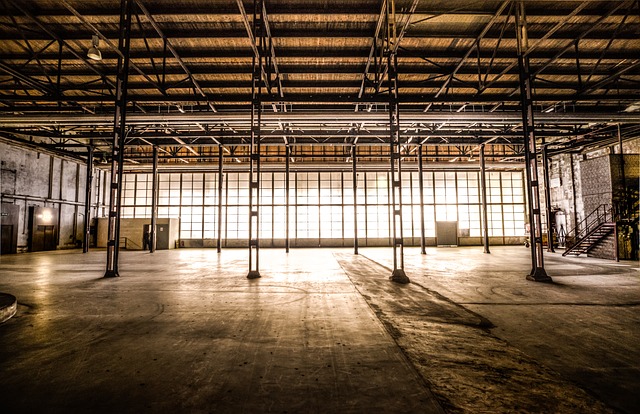In the bustling heart of any retail, manufacturing, or distribution business, the warehouse serves as the central hub where products and materials live and move. A well-organized warehouse not only boosts productivity but also improves accuracy in inventory management, saves time, and enhances safety for employees.
Identifying and implementing effective organization strategies can transform a chaotic storage space into a streamlined, efficient operation. This guide will explore seven crucial ways to reimagine and restructure your warehouse organization to pave the way to a more streamlined and profitable business.

Optimize Your Layout
Proper layout optimization is the foundation of an efficient warehouse. Begin by analyzing the flow of goods from receiving to shipping and ensure that there’s a logical order to how items move through the space. Aisles should be wide enough to accommodate equipment and personnel without congestion, and high-demand products placed for easy access.
Streamlining your layout also involves minimizing travel time between picking locations. Arranging inventory according to the volume and frequency of picks can drastically reduce wasted movement, helping to enhance the productivity of your workforce.
By making these calculated adjustments, your warehouse can experience a significant uptick in efficiency. Be sure your pallet racks and shelving are appropriately sized and spaced to accommodate your inventory selection, too. Plus, don’t forget to make use of vertical space by installing mezzanine flooring or adding higher levels of pallet racking.
Implement Vertical Storage Solutions
Maximizing the use of vertical space through vertical storage solutions can revolutionize warehouse organization. Vertical storage refers to the practice of stacking goods on high shelves or racks or using storage systems like vertical carousels and lift modules that can move items up and down within a compact footprint. This approach not only saves valuable floor space but also makes it easier to locate and retrieve items quickly, leading to greater efficiency.
By investing in the right vertical storage systems, you’re able to store more products within the same square footage, enhance inventory control, and reduce the risk of damage to goods since items are less likely to be improperly stacked or handled. This vertical leap in managing space can be especially beneficial in warehouses with limited ground area or those looking to expand their capacity without the need for relocating or building additional structures.
Keep in mind that utilizing vertical storage solutions may require additional equipment, such as forklifts or cherry pickers, and proper training for employees to operate them safely.
Embrace Warehouse Management Systems (WMS)
The adoption of a Warehouse Management System can revolutionize how you track and manage inventory. A WMS provides real-time data, forecasting, and insights that streamline inventory control, leading to a reduction in overstock or stockouts.
With the power of data analytics and integration with procurement and sales systems, a WMS can dynamically adjust to purchasing trends and seasonal demand. Small and medium-sized enterprises can benefit from WMS solutions tailored to their specific needs, allowing for competitive operability on a larger scale.
WMS technology can be integrated with other warehouse tools like barcode scanners and RFID to further enhance accuracy and efficiency in tracking inventory. By utilizing a WMS, you’re also able to automate processes such as put-away, picking, replenishment, and cycle counting.
Standardize and Label Everything
Standardization is crucial to maintaining order. Use a consistent method for naming, labeling, and arranging items to cut down time spent searching for products. High-quality, clear labels facilitate the quick identification of stock, reducing errors during picking and stocking. This simple yet effective strategy is amplified when combined with a barcode system for instantaneous and error-free data entry. An organized labeling system serves as the roadmap within your warehouse, making navigation and inventory processes more efficient.
Additionally, standardizing procedures and processes throughout the warehouse helps to create a consistent workflow that can be easily followed by employees. This not only saves time but also reduces the risk of mistakes that could potentially lead to costly errors or accidents.
Conduct Regular Training and Audits
Regular training ensures that all employees are up to date with best practices, safety protocols, and the use of new technology. It equips your team with the skills and knowledge needed to function at their best, increasing efficiency and reducing the risk of accidents. Audits of organizational systems and inventory should be conducted frequently to identify inefficiencies, inaccuracies, or opportunities for improvement. Addressing these issues proactively is essential to maintaining a highly functional warehouse.
Foster a Culture of Cleanliness and Maintenance
A clean warehouse is a more productive and safer workplace. Implementing a consistent cleaning routine avoids the build-up of debris that can lead to accidents or damage to products. Moreover, well-maintained equipment is less likely to break down, reducing downtime and repair costs.
This practice extends beyond housekeeping; systematic preventative maintenance of material handling equipment and storage systems ensures that everything is in prime working condition, further minimizing unnecessary operational hiccups. Encourage employees to take ownership of their workspace by keeping it clean and reporting any potential hazards or maintenance needs.
Invest in Quality Equipment and Tools
High-quality material handling equipment and warehouse tools are investments that pay dividends in productivity and employee satisfaction. Ergonomic tools and equipment reduce strain on workers, leading to fewer injuries and greater efficiency in material handling tasks.
When productivity tools like forklifts, pallet jacks, and hand trucks are regularly upgraded and maintained, employees can perform their duties faster and with less effort. This not only boosts operational capacity but also contributes to a culture that values employee well-being and efficiency.
Also, consider investing in technology like warehouse robotics, which can automate repetitive tasks and reduce the risk of human error. While these may require a significant initial investment, they ultimately lead to long-term cost savings and greater productivity.

In conclusion, a well-organized warehouse is a lynchpin for the success of any business that relies on storage and distribution. By optimizing the layout, leveraging vertical storage solutions, embracing advanced management systems, and standardizing procedures, businesses can realize significant gains in efficiency and productivity.
Regular training and audits, along with fostering a culture of cleanliness and investing in quality equipment, further enhance operational effectiveness. With these practices in place, a warehouse can operate at its full potential, ensuring that a business is well-poised to meet the demands of its customers and the challenges of an ever-evolving market. It’s clear that the return on investment in these areas far outweighs the initial effort and costs, leading to a sustainable pathway for growth and success.











